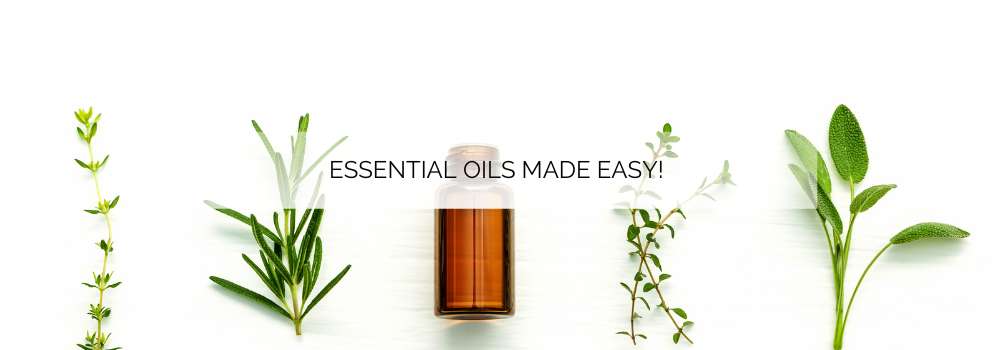What are essential Oils?
These statements have not been evaluated by the Food and Drug Administration. This product is not intended to diagnose, treat, cure or prevent any disease. This includes some affiliate links and I may earn a small commission on products recommended at no extra cost to you.
How to use essential oils
Here is the thing, purity impacts potency. Potency relates to how effective an oil is. Where the plant grows, how its harvested and how it is distilled impacts its chemistry and consistency. When you use an oil, you want it to work the same way every single time. The better the quality the better the oils work with and for your body.
AROMATIC USE is simply inhaling from the bottle or palms of your hands; making a spray or using a room diffuser. Essential oils can positively effect our mood and emotions. When we inhale them, the molecules reach our brain through the limbic system in under 30 seconds. This is where memories and emotions are stored.
TOPICAL USE is simply placing the oil on our skin where it is absorbed. We can dilute essential oils with a carrier oil (such as fractionated coconut oil) to slow that absorption. To effect the whole body apply them topically to the bottom of the feet, spine or navel.
Some essential oils, like Peppermint are very powerful. Remember? 1 drop of Peppermint oil is equivalent to 28 cups of Peppermint tea! We often use carrier oils to dilute or soften the exposure. Fractionated coconut oil is my favorite. You can also use it to calm an oil response to a sensitive area or if it accidentally gets in the eyes.
INTERNAL USE is safe with Certified Pure Therapeutic Grade (CPTG) essential oils. Because they are 100% pure with no additives or synthetics added they are safe for internal use when labeled as such. To take essential oils internally you can add a drop of essential oil to water or in a vegetable capsule.
Look for the Nutritional Facts label on the side of the bottle to ensure it is safe for internal use.
Safety
Always dilute an oil when using it for the first time, applying it to sensitive skin, or when using them with children and pets. To minimize skin sensitivity, dilute essential oils using a carrier oil like fractionated coconut oil. Essential oils should never be placed in or on mucus membranes such as the eyes, nose and ears. Included in the handbook are dilution charts for you to reference.
It is always advisable to use several small doses throughout the day rather than a single large dose. Reapply as needed every 4 hours. Start with the lowest possible dose and skin patch for sensitivity. Because every individual is unique, the dose will vary for each based on size, age and overall health status.
There are essential oils that are considered "hot" and should always be diluted: Oregano, Lemongrass, Cinnamon, Cassia, Clove and Thyme. If you are sensitive to an essential oil simply add more carrier oil to the area.
Essential oils that should be diluted for young or sensitive skin: Black Pepper, Ginger, Wintergreen, Geranium and Peppermint.
Citrus such as Lemon, Lime, Wild Orange and Grapefruit are photosensitive. Take extra caution when going in the sun. Don't apply a Citrus oil and go in the sun within 12 hours.
Citrus oils can be added to your water. When adding Citrus to your water choose glass or stainless steel. They are so potent they can break down plastic.
Pets
IIt is safe to diffuse Certified Pure Therapeutic Grade essential oils in your home if you have pets. My favorite resource is Dr. Janet Roark, DVM. She has a book and website called The Essential Oil Vet.
The general rule is to use a water diffuser in an open area and allow your animals the option to leave. There are so many beneficial ways to use them with our pets. Use common sense and observe your pets behavior when introducing essential oils. You know your pet best!
Oils to avoid with cats topically and internally: Basil, Citrus (Bergamot, Grapefruit, Lemon, Lime, Orange, Tangerine), Birch, Cinnamon, Clove, Dill, Fennel, Melaleuca (Tea Tree), Oregano, Peppermint, Thyme, Rosemary, Spearmint, and Wintergreen.
Oils to avoid topically and internally with dogs: Birch, Melaleuca (Tea Tree), and Wintergreen. Use caution with hot oils such as Oregano, Cassia, Cinnamon, Clove, Rosemary, and Thyme.
Dilute, dilute, dilute.
➡️Buy Essential Oils
Carrier Oils
FRACTIONATED COCONUT OIL (FCO) - FCO is the most common carrier oil because it is stainless, odorless and moisturizing to the skin. It is simply coconut oil with some of the fats removed so that it stays in a liquid state. FCO is not recommended for facial skin as it can clog pores for some.
Consider these options for facial skin:
- SWEET ALMOND OIL - Has no fragrance, is great for skin and contains vitamin E, vitamin A, monosaturated fatty acids, protein, potassium and zinc.
- JOJOBA OIL - Is a "wax ester" which is similar to our skin's structure. It helps reduce excess oil production, is easily absorbed and has a long shelf life.
- ARGAN OIL - Comprised of fatty acids and a variety of phenolic compounds. It is full of antioxidants and compounds beneficial to the skin. Argan is light enough to use as an everyday, non-greasy moisturizer. Great for skin and hair.
Carrier oils do not dilute the effectiveness of the essential oil. Essential oils evaporate very quickly. A carrier oil slows the evaporation and holds the oil in the tissue longer. This is especially helpful when we are addressing sore muscles, cuts, scrapes, etc...
➡️Buy Essential Oils
What are the top 10 essential oils?
There are so many health concerns that can be addressed with the Top 10 essential oils. My goal is to teach you how to live a natural lifestyle so when things come up you will know how to reach for your oils in place of traditional medicine when possible.
You may have noticed that essential oils are everywhere, the grocery store, gift shops, even Amazon. But what you may not know is that they are NOT created equal.
There are 4 main grades:
- SYNTHETIC GRADE - according to multiple third party laboratory testing, most suppliers are selling products with artificial and compromised agents. These oils lack purity and can be harmful to the body. These include things like laundry, perfumes and body products.
- FOOD GRADE - they are measured by the GRAS standard (Generally Regarded As Safe). This is a much higher standard required for internal use, but this grade is mainly used to flavor food and lacks therapeutic benefits.
- THERAPEUTIC GRADE - The problem with this category is the oil industry is not well regulated. These are generally used for massage, aroma or cosmetic use and have a low standard to pass to qualify.
- CERTIFIED PURE TESTED GRADE (CPTG) - doTERRA saw a huge gap in the marketplace for pure essential oils and made it their mission to pursue what is pure and produce the best essential oils on the market. CPTG is exclusive to doTERRA essential oils. Every batch must pass in-house and third party testing to guarantee that no foreign contaminants or fillers exist. This is a standard that far exceeds organic labeling requirements.
Here is the thing, purity impacts potency. Potency relates to how effective an oil is. Where the plant grows, how its harvested and how it is distilled impacts its chemistry and consistency. When you use an oil, you want it to work the same way every single time. The better the quality the better the oils work with and for your body.
Where to purchase doTERRA essential oils?
I am a doTERRA Wellness Advocate and I would love to help you get started on your essential oil journey. The easiest and most affordable way to get started is with a starter set.
Have questions? send me an email terri@iambionicwoman.com or visit my essential oil site.

